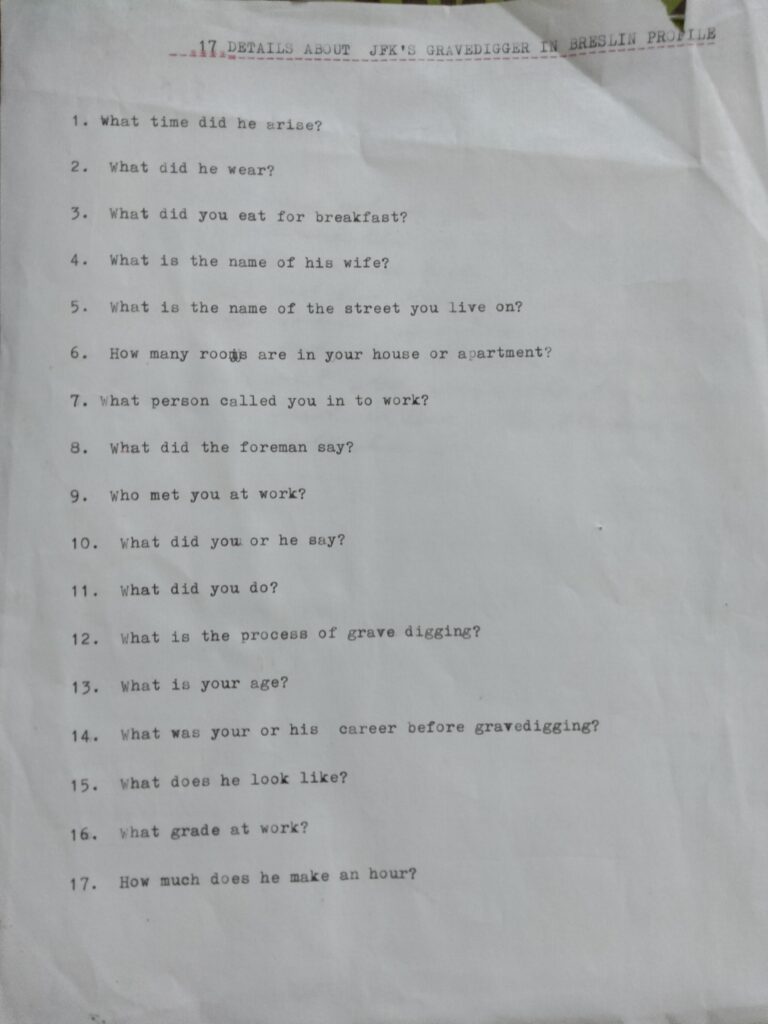Want to Write More and Write Better? Try These Three Writing Warm-ups

Nobody likes writing drills.
In more than a quarter century in the news business, I can’t think of a single reporter or writer who has acknowledged to me even doing writing exercises. Even supporters might admit a writing exercise carries the whiff of an amateur about it. (What, do you subscribe to Writers Digest or something?!).
Doing a writing exercise requires more than bearing a stigma, though. It also requires time and effort—two things even well-paid writers are loath to expend.
Yet I am convinced writing exercises are not only advisable but also essential. They are more than mental exercises. They prepare the mind, body, and soul.
Consider professional athletes. They don’t walk from the locker room, stop to take in the surroundings, and compete before thousands of fans. No, they do warm-ups. They shoot, pass, run, defend, throw. Then, they compete. Professional musicians have the same ritual. Before they perform at the concert, they tune up their instruments.
Writers and reporters, too, should warm up. We practice a craft. To excel, you need to develop skills. Practicing helps you to acquire skills. The late “gonzo” journalist Hunter S. Thompson famously imitated F. Scott Fitzgerald’s rhythmical prose by typing out The Great Gatsby.
I have practiced the following three writing warm-ups. They attack my weaknesses: drab language, insufficient detail and explanation, and a punishing inner critic. (My old bosses might say those are hardly the only ones!).
Do writing drills work? A quick search on Google Scholar yields no answers. I know they have worked for me. I wrote one of my best articles while doing copywork. And I started the object writing exercises early last week and the to morning-pages drill the past two days.
1. Object Writing
How long: Twenty minutes
How: List the five senses at the top of a blank sheet of paper—smell, sight, touch, taste, and hear. Get a timer for ten minutes. Find an object to write about, a thing you can drop on your foot. It could be a coffee mug, a pencil, or a notebook.

Spend ten minutes describing the object with your five senses. Yes, you probably won’t use your sense of taste. Yet you will use your four other senses. After you finish, use a yellow highlighter and highlight all the objects and senses you used.
Why: I practice the drill to make my writing vivid. Without the drill, I find my words become stale and lifeless like wet dead leaves. I am no longer able to write sentences such as “The calico cat trotted up the cement steps, meowed, and brushed her fur against the freshly painted door.” Instead, I would write, “The cat walked from the front yard into the house.” A big difference in quality!
By practicing object writing, I am more conscious of my five senses. For example, the other day I was walking around my neighborhood, and while looking at the houses, noticed that one house had an unusually thick glass window. What was it? If not for my writing drill, I would have missed this tiny but significant detail. (It was an art deco window, as it turned out).
Take smell, for example. It is reputed to be the strongest sense. Yet how often have you used it in your writing? Not many, I would guess. This is a missed opportunity.
2. Copywork
How long: Twenty to thirty minutes.
How: Find a favorite page from an article or book. Study the writing and try to memorize two- or three paragraphs. Then, write your words down. Practice for twenty to thirty minutes.
Why: Practitioners get many benefits. For example, I appreciated the rhythm of first-class writing. Take this passage from The Great Gatsby:
The only completely stationary object in the room was an enormous couch on which two young women were buoyed up as though upon an anchored balloon. They were both in white, and their dresses were rippling and fluttering as if they had just been blown back in after a short flight around the house. I must have stood for a few moments listening to the whip and snap of the curtains and the groan of a picture on the wall. Then there was a boom as Tom Buchanan shut the rear windows and the caught wind died out about the room, and the curtains and the rugs and the two young women ballooned slowly to the floor.
I can’t claim to have written sentences even remotely as gorgeous, but is there no value in having them at the back of your mind? I say so.
Also, I find that copywork made me appreciate detail.
I copied passages from Jimmy Breslin’s famous profile of the man who dug President Kennedy’s grave in November 1963. After I copied most of the profile, I counted the number of details. I found seventeen at least. Among those were the time the gravedigger woke up, what he wore, what he ate for breakfast, his wife’s name, and his career before gravedigging. For my list, please see below.

3. Morning Pages
How long: Twenty to thirty minutes.
How: Bust out an A4 notebook or those blank pages. Use a pen or pencil. Write
Continuously. Even if you are stumped, write “So it goes” or “in other words.” Write about your plans for the day, the project you are working on, or anything.
Why: The goal is not to craft chiseled prose. The goal is to silence the inner critic who prevents you from writing at all, the one who says your writing could win a “worst writing” contest. By letting the words flow, you silence the little voice in your head or inner critic.
I find the drill remarkably effective. I had expected to suffer fewer stops and starts. After only two exercises, I find my words spill from the page. That’s what you want! You want to act like a basketball player practicing his shot before the game.
-30-

0 Comments